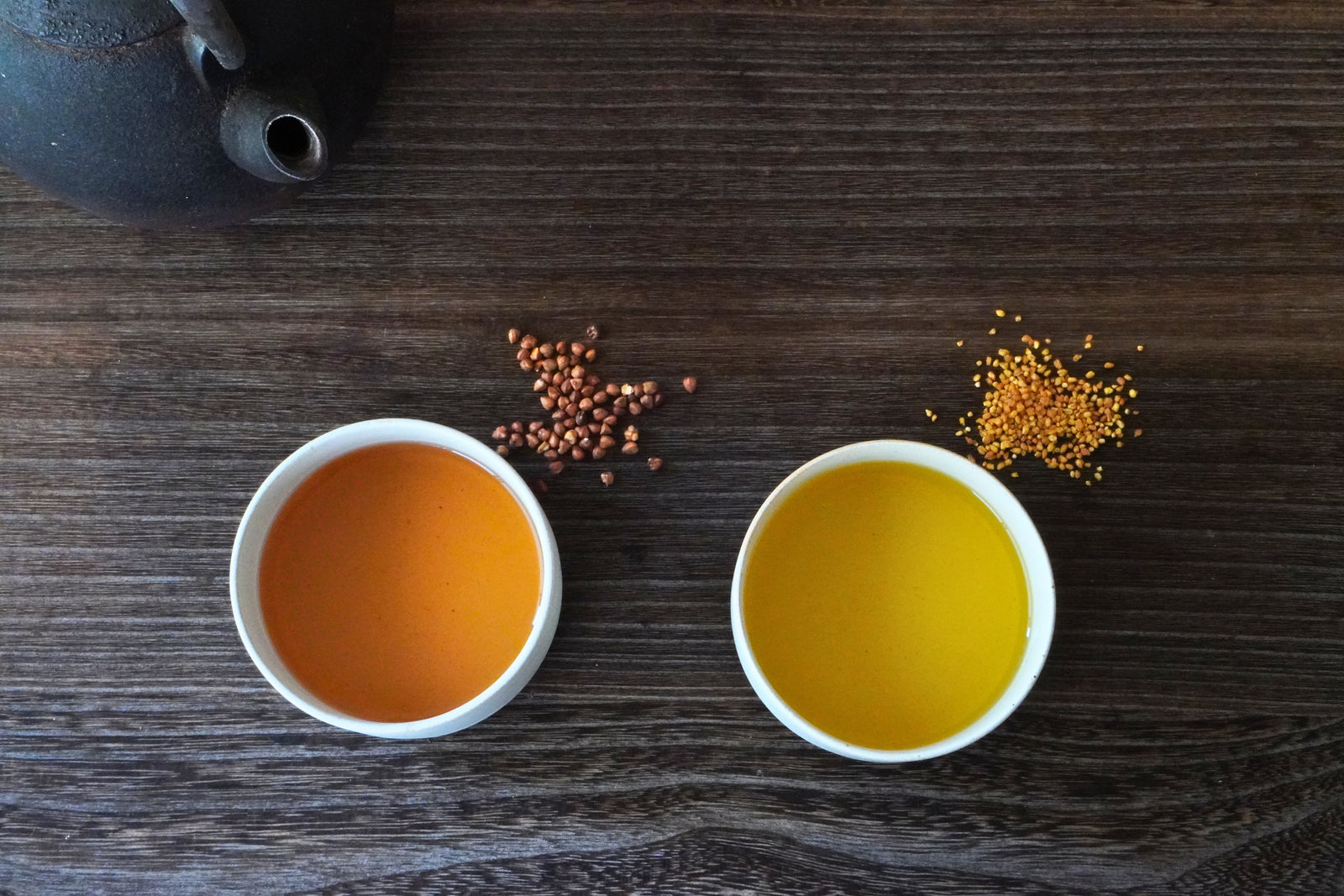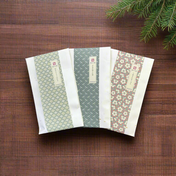Have You Heard of “SOBA”?
Soba is a plant from the buckwheat family (Polygonaceae, genus Fagopyrum). The seeds from this plant are ground into flour and used to make soba noodles, which are also simply called “soba.” If you've been to Japan, there's a good chance you've tasted soba noodles.
(Photo: soba, or soba noodles)

There’s another way to enjoy soba—“Soba-cha” (Soba tea)!
What is Soba Tea?
Soba tea, known as Soba-cha (蕎麦茶) in Japanese, is a caffeine-free tea made by roasting buckwheat seeds. It has a warm, nutty and toasty aroma, making it a comforting drink enjoyed by people of all ages. In addition to its pleasant flavor, soba tea is packed with nutrients such as vitamins, minerals, and rutin — a type of polyphenol known for its antioxidant properties.
There are two main types of soba tea:
- Regular soba tea – Made from common buckwheat ("futsu-soba" in Japanese) (photo: left)
-
Dattan soba tea – Made from Tartary buckwheat, also known as bitter buckwheat ("dattan-soba" in Japanese) (photo: right)


The Differences Between Soba Tea and Dattan Soba Tea
Both types of soba tea are aromatic and easy to drink, but each has its own distinct characteristics.
Regular soba tea has a mild, mellow flavor with a rich, toasty aroma. When brewed, it takes on an amber color. Its smooth taste makes it especially enjoyable for beginners.
Dattan soba tea has a light, refreshing aroma and brews to a bright yellow-green color. It is more bitter than regular soba tea, but it stands out for its high nutritional value. Dattan soba contains up to 100 times more rutin than regular soba tea. This high rutin content is one reason it’s become popular among health-conscious individuals.
(Photo: Regular soba tea – left, Dattan soba tea – right)

How to Brew Soba Tea
For Hot Soba Tea
The most important thing: use boiling water! If the water is not hot enough, the tea won’t release its full aroma.
1 Put 1 tablespoon of soba tea or ½ tablespoon of Dattan soba tea into a teapot.
2 Pour about 300ml of boiling water.
3 Steep for 2–3 minutes (longer for stronger flavor).
For Iced Soba Tea
1 Add 3 tablespoons of soba tea or 2 tablespoons of Dattan soba tea to 1L of boiling water.
2 Simmer for about 3 minutes.
3 Let cool to room temperature, then refrigerate.
Tip: Using a fillable bag makes it easy to remove the buckwheat seeds afterward.
Other Ways to Enjoy Soba Tea
Soba tea isn’t just for drinking—you can also use it as a crunchy topping! Regular soba tea is especially good for this because of its toasty, nutty flavor and subtle sweetness.
Try it as a topping:
- Over ice cream
- In salads (like croutons!)
- Sprinkled over rice or in Chazuke (rice with green tea)
Give soba tea a try—whether you’re sipping it hot or iced, or using it to add texture to your meals, it’s a healthy and flavorful addition to your day!
Today’s Recommendations
-
Chasandai: Regular Sobacha Buckwheat Tea
- [ NEW! ] #0914.N5 Dattan Sobacha (Nagano Grown) by Yamane-en
Grown in Nagano. Strong roasted buckwheat flavor with nutty notes. Softer in texture (if eaten).
-
#0125.H2 Dattan Sobacha (Hokkaido Grown) by Yamane-en
Pesticide-free. Strong buckwheat aroma, soft texture. Grown in Hokkaido.
Accessories
-
Biodegradable Cotton Fillable Tea Bags (Bemliese™)
95 x 70 mm, 100 pcs, no string
- Fillable Tea Bags, no string, 95 x 70 mm, 100 pcs

Recipe



